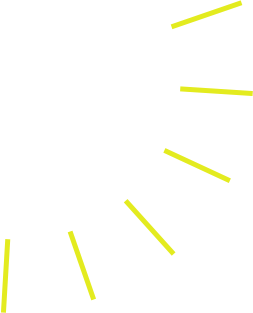We as humans love light! The pure morning rays slanting through the window, the golden glow of afternoon sunlight, the lamp in the doorway guiding you home. As the reach of technology expands, our love affair with visible light is eroding as we spend more one-on-one time with blue light. And with this increasing addiction to blue light come potential health dangers you might not even be aware of.
White Light: a Rainbow Coalition
Sunlight, or white light, is a complex blend of shades of light rays with different wavelengths and energy. Think of the wide range of hues in your childhood super box of crayons, from vibrant reds, oranges, and yellows to deep purples, blues, and greens. All these colors combine to form “pure” white light.
Blue light rays have the shortest wavelengths as well as the highest energy, and about one-third of all visible light waves are these high-energy rays. They scatter readily when they strike air and water molecules in the atmosphere, which explains the blue of a cloudless sky.
Blue Light: The Good, the Bad, and the Ugly
Blue light is essential for tip-top health since it supports memory function and brain activity, increases alertness, and lifts mood. It is also “natural” in that most of it comes from the sun. However, fluorescent and LED lights also produce significant amounts of blue light, as do our precious screens. This includes your PC, MacBook, and smartphone.
Since the majority of us, from toddlers to senior citizens, are spending increasing amounts of time gazing at screens, health care professionals worry about the long-term effects of blue light on our eye health, sleep patterns, and overall health.
We aren’t talking about ultraviolet light here. UV light is just past the visible light spectrum and invisible to the human eye. Our eyes block much of it from reaching the retina, and UV sunglasses block the rest.
Visible blue light passes right through our corneas and penetrates the retina. Experts suggest it can damage light-sensitive cells in the retina, perhaps leading to a partial loss of eyesight or an irreversible loss of eyesight. And anyone who has ever pulled an all-nighter on the computer knows how excess blue light exposure can make your eyes sensitive and tired, causing digital eye strain.
Blue light has also been shown to reduce melatonin, a hormone that makes you sleepy at night, delaying REM sleep, and disrupting your body’s natural rhythms. Some scientists believe the connection between blue light and sleep disruption can be linked to big-picture health issues such as obesity and cancer.
Beating the Blues
Since ditching technology isn’t an option, there are things we can do to tame the blue monster. Here are a few:
- Stop looking at your screens two to three hours before bedtime.
- Use dim red lights for night-lights.
- Get a blue light filter for your computer, smartphone, and tablet. The filters block significant amounts of blue light without changing what you see, and some double as screen protectors.
- Get blue light glasses for screen use to block blue light. The glasses are available with or without a prescription.
Blue light exposure is necessary to our overall health, but too much of a good thing can always have consequences. By taking some of the precautionary measures listed above, we can ensure that the exposure is not becoming harmful.


